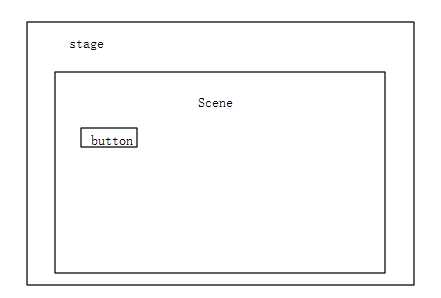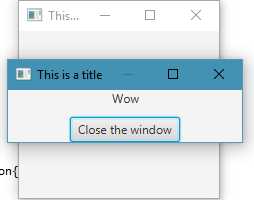标签:except lock static ssi lambda 基本概念 ack ini proc
1 内部匿名类和Lambda表达式
2 Switching Scene
3 信息提示框 (Alert Boxes)
前情回顾:
前面的学习内容:关于JavaFX的基本概念,以及窗口所使用的类的一个介绍

学习了如何运用事件对一个按钮做出最简单的回应—click me 点击。
在之前的例子上对
button.setOnAction(this);
进行更改
button.setOnAction(new EventHandler<ActionEvent>(){ @Override public void handle(ActionEvent event){ System.out.println("I am an annonymous inner class"); } });

此时点击按钮调用的时间就是我们后来修改的,不用去检验每个按钮的名字,直接在生成对象之后对象的方法上调用内部类,使得事件发生。"Click me"。
但是后来会出现一个问题。按照上一次的想法我们有很多个按钮的时候会写出if条件结构,然后还要去对应代码中的对象,但是都使用内部匿名类也不方便。
甲骨文公司在Java 8中开始加入了Lambda表达式,此时将这个语句改成如下:
button.setOnAction(e-> System.out.println("heyyyyy, I am Lambda"));
此时控制台对我们点击了按钮进行回应:heyyyyy, I am Lambda,Java自动帮我们处理这个事件。同时也可以改成
button.setOnAction(e->{ System.out.println("heyyyyy, I am Lambda1"); System.out.println("heyyyyy, I am Lambda2"); System.out.println("heyyyyy, I am Lambda3"); });
2 Switching Scene
import javafx.application.Application; import javafx.event.ActionEvent; import javafx.event.EventHandler; import javafx.stage.Stage; import javafx.scene.Scene; import javafx.scene.control.Button; import javafx.scene.control.Label; import javafx.scene.layout.StackPane; import javafx.scene.layout.VBox; public class Main extends Application{ Stage window; Scene scene1,scene2; public static void main(String[] args) { launch(args); } @Override public void start(Stage primaryStage) throws Exception{ window = primaryStage; Label label1 = new Label("This is Scene1"); Button button1 = new Button("Go to Scene2"); button1.setOnAction(e -> window.setScene(scene2)); //Layout 1 - children are laid out in vertical column VBox layout1 = new VBox(20); layout1.getChildren().addAll(label1,button1); scene1 = new Scene(layout1,200,200); //200x200 pixel //Button2 Button button2 = new Button("Go back to Scene1"); button2.setOnAction(e -> window.setScene(scene1)); //layout2 StackPane layout2 = new StackPane(); layout2.getChildren().addAll(button2); scene2 = new Scene(layout2, 200, 200); window.setScene(scene1); window.setTitle("This is a title"); window.show(); } }
研究Scene1和Scene2 的两种不同的情况,Scene的切换通过点击Button来实现。这个例子看起来有点像我们平时使用的软件,比如说我们要关闭一个word文档的时候会发现此时,系统弹出一个窗口,问是否保存。有时候系统出错,也会弹出一个窗口来提示错误。下面将介绍具体的例子。
 点击按键之后弹出对话框
点击按键之后弹出对话框
此时就很像我们实现AlertBox,如果不解决新弹出窗口,比如关闭,那么旧的窗口就不能操作。
public class AlertBox { public static void display(String title, String message){ Stage window = new Stage(); // make a new Stage for our Scene window.initModality(Modality.APPLICATION_MODAL); //initiate the Mod by the using the Java Library window.setTitle(title); //Set the title of the new window window.setMinWidth(250); Label label1 = new Label(); //make label to write some message label1.setText(message); Button closeButton = new Button("Close the window"); closeButton.setOnAction(e ->window.close()); VBox layout = new VBox(10); // make the Alert box layout layout.getChildren().addAll(label1, closeButton); //Add the Button and label to the window layout.setAlignment(Pos.CENTER); Scene scene = new Scene (layout); window.setScene(scene); window.show(); window.showAndWait(); } }
public void showAndWait()
A Stage is hidden (closed) by one of the following means:
Window.hide() or close() method on this stage
标签:except lock static ssi lambda 基本概念 ack ini proc
原文地址:http://www.cnblogs.com/rynerlute/p/6387947.html